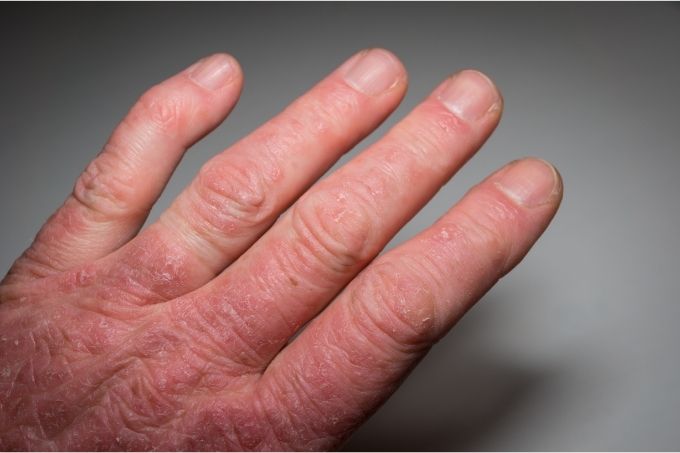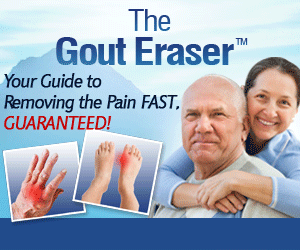
Psoriatic arthritis is a type of arthritis that is mostly common in patients with psoriasis. Psoriasis affects the skin and can lead to red and scaly patches. In other words, those suffering from psoriatic arthritis will end up with both affections, requiring even more treatment. The affection is more common in people aged between 30 and 50.
It is estimated that around 30% of those suffering from psoriasis will end up with psoriatic arthritis as well. There is no actual connection between the severity of the affections once they kick in. Keeping everything under control implies diagnosing the affection in an early stage.
What are the first signs of psoriatic arthritis?
1. Joint heat and swelling
Swelling is a common symptom of inflammation – any type. Arthritis makes no exception either, not to mention psoriatic arthritis. Practically, some of the joints get swollen without any apparent reasons. On the same note, as the inflammation occurs, it will also cause heat. The heat will not be too obvious in an early stage.
Instead, you will only notice it when you touch the inflammation. The affected area feels warm when you touch it. If left untreated, this warmth will become more obvious and not just when you touch it. Instead, you will feel heat all around the inflammation, whether you touch it or not. At this point, the affection is no longer in an incipient stage, so it requires immediate treatment.
2. Nail separation
Nail separation is one of the most overlooked issues associated with psoriatic arthritis. In fact, the condition may occur without being triggered by this type of arthritis. Practically, nails separate from the nail bed and end up falling. The affection is known as onycholysis in the medical world and may not always be associated with arthritis.
The issue does not occur overnight. Nails will not separate within a few days only. Instead, it takes weeks and even months. They become weaker and weaker in the long run until they actually fall. The issue may occur with or without pitting. This is a sign of psoriatic arthritis only when it comes together with other symptoms.
3. Swollen toes and fingers
Psoriatic arthritis affects all types of joints in the body, but it seems to be more common in big joints. However, small joints are not to be overlooked either. The affection reacts differently in various patients. Some people, for instance, experience inflammation in small joints. At this point, the toes and fingers can also be affected.
At this point, psoriatic arthritis will evolve from there. Toes and fingers will end up looking like sausages. The affection is also known as dactylitis. There is a difference between classic arthritis and psoriatic arthritis. Psoriatic arthritis will not make the joint swell, but the whole finger or toe, causing even more difficulty in daily activities.
4. Foot pain
So, what are the first signs of psoriatic arthritis? Which one shows up first? The truth is it depends from one patient to another. Some people will also experience foot pain in an early stage of psoriatic arthritis. They have no other signs, but this one, so they need to address the problem as soon as they notice it.
Pain can occur in the feet, but it may also target the ankles – before or after the feet are affected. On the same note, those suffering from psoriatic arthritis may also end up with enthesitis. This is another type of pain that affects areas where bones are attached to tendons. As a direct consequence, the heel will be affected.
5. Less motion
Everyone out there has a certain range of motion, regardless of what they want to do or what parts of their bodies they use. When it comes to psoriatic arthritis, you have to pay attention to the range of motion associated with your joints. If you feel like you can no longer move or do what you could do weeks ago, chances are you have a problem and need a medical examination.
When it comes to psoriatic arthritis, you will find it more difficult to extend arms, fold forward or bend over, but also to bend your knees. You will feel a bit of pressure that prevents you from moving further. On the other hand, you could also experience problems while using your fingers. This problem could affect people working with their hands – drawing, typing, manual handling and so on.
6. Joint stiffness and painful sensations
Just like any other type of arthritis, psoriatic arthritis causes inflammation in the joints. Obviously, it causes stiffness in the long run, as well as tenderness and painful sensations. You could feel it in a single joint, but it may also affect more joints at the same time – the pain could also float from one joint to another.
Psoriatic arthritis tends to affect knees before anything else. Then, other joints include the lower back, as well as ankles, toes and fingers. Stiffness and pains may come and go – even if they do disappear, chances are they will return later on and they will be more intense, so do not overlook them. Seek help as soon as you notice them.
7. Pitted nails
Just like separating or falling nails, pitting nails will not occur straight away. It is not the type of problem that will occur overnight. It will take a few weeks to notice problems or perhaps months. Keep in mind that nails could separate without pitting and vice versa, yet the two nail related issues may also occur at the same time.
Simply pay attention to changes to your nails. If you can notice signs of pitting, this might be a very early sign of psoriatic arthritis, so go see your doctor straight away. Some of your nails will appear to be dented, while others may seem bumpy. Remember, psoriasis itself is also an affection that may affect your nails – they will look like you have an infection.

8. Lower back pain
Psoriatic arthritis will affect all kinds of joints. On the same note, it may also affect your back – the lower back mostly. You will experience problems bending over or folding forward. You will find it more and more difficult to stand up or sit down, while your motion of range will be drastically reduced. Now, psoriatic arthritis may also lead to an affection that targets the back – spondylitis.
Spondylitis will cause inflammation in the joints around the spine. Seek help from a doctor as soon as you notice some signs. Do not let the affection aggravate because it can cause even more severe problems in the long run. For example, sacroiliac joints in the pelvis might actually fuse together if you let the condition aggravate.
9. Eye related problems
Patients suffering from psoriatic arthritis will experience associated problems too. For instance, while not always related to psoriatic arthritis, eye problems are not to be overlooked either. Eye problems are quite diversified and may include redness, but also inflammation. If you notice your eyes are inflamed, pay attention to signs of redness, pain, irritation and itchy sensations.
In more severe cases, you may also notice some changes in your vision. However, such changes are not too obvious and will not necessarily affect your daily activities.
10. Elbow painful sensations
Psoriatic arthritis comes with a bunch of extras. All these complications, signs or symptoms may also be related to as separate affections – enthesitis is one of them. Enthesitis comes with more pains and affections and one of them will target the elbow. In the long run, it will lead to an issue similar to the so called tennis elbow.
Symptoms associated with enthesitis are more diversified and could include painful sensations or tenderness. In some cases, the patient may find it difficult to move the elbow – reduced range of motion.
11. Fatigue and tiredness
Fatigue can be described in more ways and there are lots of reasons behind it. A bad sleep last night, a hard day in work, a long walk or gym could inevitably cause it. In such cases, fatigue is temporary and you should be back on track after a day or two. When there are no apparent reasons for it, something is definitely wrong.
A general feeling of fatigue can include more symptoms. It could be a mild tiredness, but it could also be exhaustion. It is quite common in those with psoriatic arthritis. You may find it hard to go through a day without taking a nap in the middle of it.
Conclusion
Bottom line, what are the first signs of psoriatic arthritis? There are obviously more early signs and symptoms out there and they all react differently. You may have some symptoms that no one else does have and the other way around. The affection is different in people, hence the necessity to seek the help from a doctor when not sure.
Again, any of these signs could be a temporary issue. You may not be suffering from psoriatic arthritis, but you could also have it. This is why medical assistance is mandatory for a diagnostic.
Suggested articles:
– How To Prevent Arthritis In Knees – Info and Prevention
– Arthritis and Weather – How Does Weather Affect Arthritis?
– Facet Joint Arthritis (Spinal Osteoarthritis) – Causes, Symptoms, Treatment
– Arthritis in Hands – Causes, Symptoms, Treatment
– Reflexology for Arthritis – Can Reflexology Help With Arthritis?
– Carpal Tunnel Vs. Arthritis – Differences & Similarities
The Gout Eraser™: The all-natural guide for permanent gout removal
The Gout Eraser™ is a short, to the point guide on how to reverse gout symptoms without ever leaving your home. The guide goes into extensive detail on exactly what you need to do to safely, effectively and permanently get rid of gout, and you are GUARANTEED to see dramatic improvements in days if not hours.
To learn more about The Gout Eraser™ system, check out the following free video presentation: The Gout Eraser™





